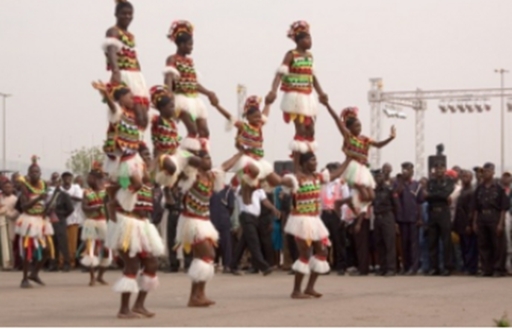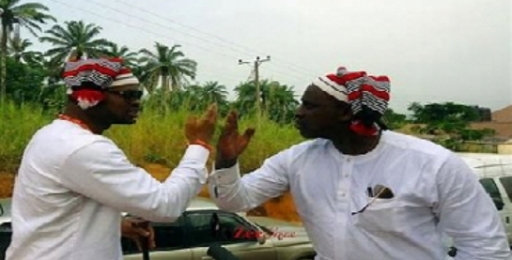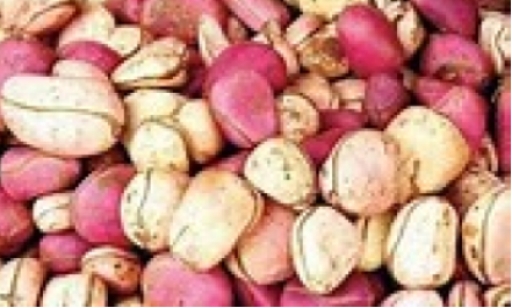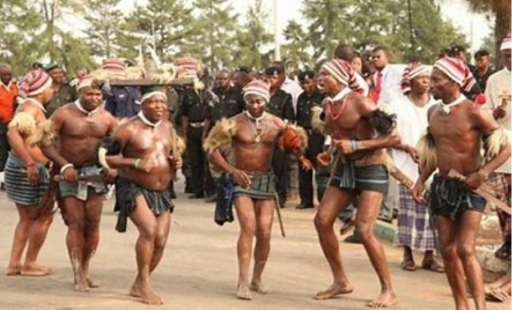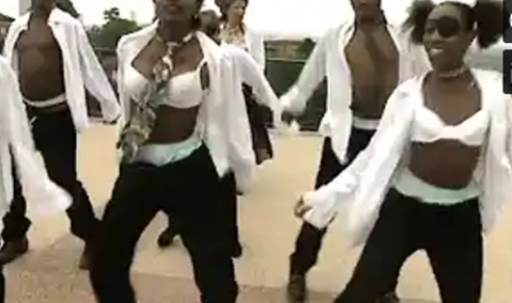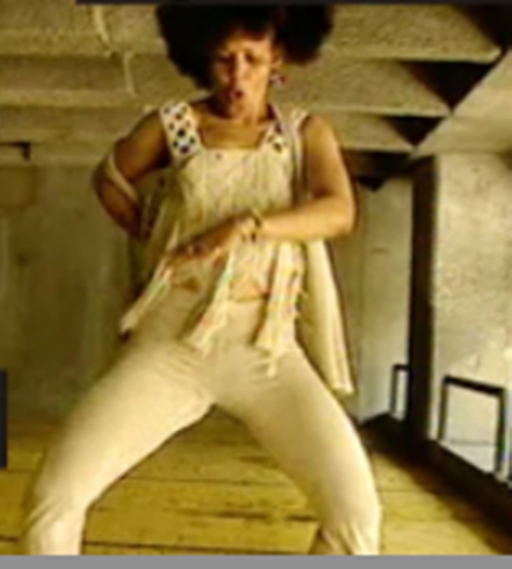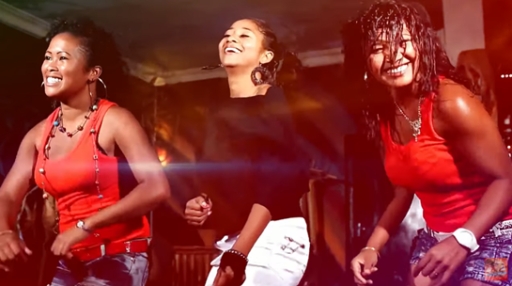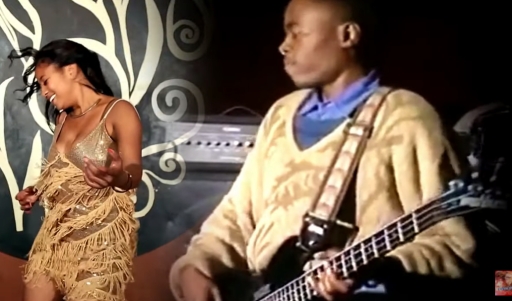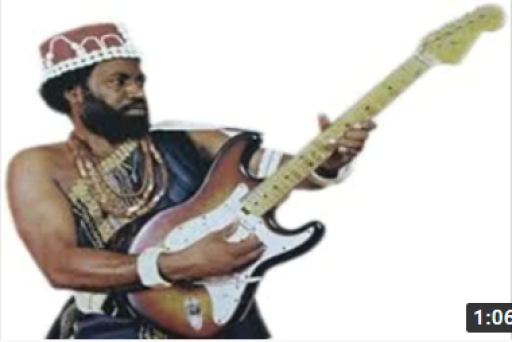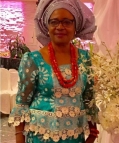It does not only keep family names in circulation for generations but attracts honor and respect to those who embrace it as a legal union between a man and a woman. To the woman, the Igbo truism of "di bu ugwu” holds. To the man, finding a wife is same as discovering a good thing and being favored by his creator. In Igbo land, such favors for the man includes promotion in the kindred to the rank of family members who can take portions from a communal land whenever shared. As a matter of fact, no matter how old a man may be, as long as he remains unmarried, he is regarded as someone whose gray hairs cannot stop him from being classified in same category as boys far younger in age who still love moonlight plays. Marriage remains the yardstick for adulthood in Igbo land unlike in most other cultures where chronological age is used for such.
The major objective of the cultural marriage procedure in Ovim, as well as, in other Igbo communities, as earlier stated, is to ensure that every marriage contracted is made to last for a life time in love, peace and unity.
As an institution of such monumental importance to the Igbo culture, marriage tradition enjoys a carefully guarded procedure for getting involved in it. Adultery and fornication in the name of living together as partners is not allowed. Scheming to take another man’s wife from him, as King David of the bible did, is an abomination. The Igbo exercises the same care construction engineers put into home construction in arranging marriages in their communities. It is never a haphazard affair as any form of carelessness could mean rocking the very foundation of the community. Why? A faulty foundation for young families arising from wrongly instituted marriages will eventually result in a dysfunctional community. Ndigbo abhor such scenarios and do all within their power to get things right from the onset.
TRADITIONAL MARRIAGE IN OVIM
The major objective of traditional marriage procedure in Ovim, as well as, in other Igbo communities as implied earlier, is to ensure all marriages endure for a life time in love, peace and unity. The importance attached to getting married is further accentuated in the administrative structure of the community where marital status determines the rights and privileges enjoyed by a man. So you find children growing and learning early enough that marriage is a vehicle for social acceptance and progression and as such work hard to embrace it as soon as they become of age. The desire is so strong that in olden days the moment the birth of a female child is announced families with growing young male adults would struggle to be the first to indicate interest in marrying the child to their son at maturity. To concretize such interest, the intending family, on behalf of their son, would make a token gift of money in coins to the baby girl. Usually, the cash is immersed under water contained in a miniature earthenware dish and presented to the mother of the child. When the child gets to the age of twelve, she would transfer to the home of her future groom under the strict care of the would-be mother in-law until she attains the age of marriage. Sexual contact of any kind would never be allowed between the girl and the- would –be- groom. Any girl married following this step would normally be re-christened, Nwannediya, to mark the fact that she had been raised and nourished for marriage in the household of her husband. In some other cases, young girls who were recommended and preserved by their married elder sisters to be married to a man in the same homestead as their sister were re-christened, Ogooma.
This ancient practice made sure thorough bonding and sound familial relationship were pre- established prior to real marriage. It also ensured that the girl was fully assisted to remain a virgin until marriage. Under this option, as personally observed by the author, there was hardly any friction in such marriages. But this has long been justifiably discarded as opportunities for the girl-child became expanded beyond just getting married and raising homes. By this also, the full responsibility of raising the girl child emotionally and morally became reverted directly to the biological parents so she could prepared to become roundly fit to manage the challenges of future marital responsibilities. However, the aspect of giving remarkable romantic names to wives, such as, Obidiya, Omasiridiya, Okwerenkediya, Ogbonnediya continues in Ovim to date. So if you are dreaming of getting married to an Ovim man, you had better leave room for an endearing name being added to you from your husband’s family.
CURRENT PRACTICE
When a man in Ovim community becomes economically stable and desires to graduate to dibiriuhu, he informs his parents to do a search for a lady he could marry either from his community or elsewhere. On the alternative, he could on his own give information on whosoever he has found as his probable wife for further investigation and approval from his parents. Either way, such a development is received with great joy and appreciative nods as the earnest expectation of every parent is to watch their children start their own families. After assuring themselves that their son has become financially viable and, thus, able to support a lady in marriage, the parents, along with other family members and friends, would deliberate on available referrals on marriageable ladies in the community and environs with a view to narrowing down the choice to a single name.
One of the avenues through which suitors make personal choices for their future wives is by holidaying in the community during the annual festivals that draw many families home. Cultural dances arranged at such festivities draw a lot of maidens to participate, thus, providing opportunities for suitors to choose brides from a large pool of attractive well groomed girls. An example is the popular, Nwaogbaego dance. It features maidens performing while skimpily dressed in beaded costumes designed to cover only the waistline down to the upper half of the thigh. The bust line is secured with a folded multicolored soft head scarf but gently enough to permit noticeable upward and downward movements of bust area in tandem to the rhythm of the resonating ekwe beats. To add maximum effect, mothers ensure their daughters appear in additional accessories and make-ups so attention of intending suitors will never be missed at the arena.
While the performance is on, a prospective suitor would jostle into the dance arena; adoringly step in front of a lady dancer; then begin to spray money on her as a signal of intention to know her more. Before the suitor leaves the arena, he collects relevant information to enable him trace the girl to her family for the purpose of making a formal proposal for marriage. But as straightforward as this option is, it has had to be discontinued by the local evangelists as it was seen to be promoting physical beauty as the primary precursor to getting married much the same way fashion parades channel ladies to modelling roles. Such gatherings have, however, been largely replaced by fund raising activities, youth programs and male- dominant cultural events organized to bring many families and individuals together in a rather informal settings for one- to- one meetings and introductions. It should be noted that maiden dance cultural outfits are still being practised as commercial ventures in places like Afikpo in Nkwa Umuagbo Dance Troupes. Some lady performers still manage to hook their future husbands through such appearances as in the famous case of a current university professor who got attracted to a prominent politician after a state performance when she was young.
In whatever way the lady is spotted and eventually chosen, what follows next is a painstaking background checks on both the girl and her family. Foot soldiers acting as undercover agents are engaged to try and dig up as much relevant information as possible relating to moral integrity, genetically-related health issues, and genealogical family tree. There is usually zero- tolerance for any revealed case of thievery (ikwu ohi), running cases of non-healing sores (ikwu abu), tendency to suicide, mental disorders, sudden wealth (uba gidim) and blood ties between the two families. If it is established that a blood relationship between the intending couple exists within the non-permissible fourth generation limit, the marriage will never hold to avoid perpetuation of undesirable genetic traits.
As soon as the reports turn in and are considered favorable by the initiating family, preparations to kick start the marriage process will begin in earnest. It is important to sound a note of warning here regarding diligence on the part of the investigating team. Care must be taken to ensure that those being interviewed for information are not interested parties. Why? Because there have been cases where interviewees have deliberately given false damaging information out of envy and, in fact, ended up diverting the intending suitor to their own daughters! These days too, medical reports on HIV/AIDS status are demanded.
FIRST VISIT TO THE FAMILY OF THE INTENDING BRIDE.
The first visit to the family of intending bride called mmai ohia na uzo (expression of interest) is usually preceded with a request for an appointment from the intending groom's family.
On the appointed day, the groom, along with a select members of his immediate family, makes the visit with the following items: four gallons of palm wine, two cartons of lager beer, two bottles of whiskey or brandy.
On arrival the visitors are welcomed with kola nuts presented to the leader of their delegation by the head of the host family. With prayers said, the kola nut is broken, shared and chewed. A pot of palm wine brought by the visitors is poured out by a young man from the host's family into a specially carved out round palm wine calabash jug. Clutching the jug with the left hand, the dispensing young man deftly raises it up and allows the wine to fill a cup held with the right hand. He presents the cup of wine to the head of the visiting delegation. Palm wine is never presented with the left hand. When he has taken a long sip from the cup being watched by others to show the wine is safe, the dispensing young man fills more cups to serve others in the party. A member of the host family would after tasting the wine offer a complimentary remark on the quality of the wine while licking his upper lip with his tongue: “ Ah, this must have come from an expert tapper. It is a long time I drank anything as good as this.” In response, a visiting team member will jokingly cut in: “ We know your people love good drinks and we took time to order this one from the best tapper in our clan". After a few such exchanges and with all having had a taste of the wine, the head of the delegation is beckoned to state the purpose of their visit. He will clear his throat and greet the party by saying, “ Ovum kwenu o!”. The party will respond with the shout of "yaa!” He then addresses the party introducing everyone in his delegation and conclude by saying: ”There is a fruitful goat in this family which you are forbidden to milk but which I desire my son to possess. We are therefore asking that you most graciously permit me to take possession of it". He will then be asked to define the “ very goat" of interest since most often there would be more than one such fruitful “goats” in the family. After the goat has been identified, the head of the host family, responding, will say,: “ Your visit to us is a good one. We have heard your request but you will allow us to seek the opinion of our daughter and whatever is the case, you will surely hear from us in a fortnight “. Thereafter, drinking and eating will continue amidst lively witty remarks and jokes until departure time.
FAMILY POST HOSTING DELIBERATION.
A family meeting will usually hold after the introduction visit where the girl in question would be asked relevant questions regarding her acceptance or not of the marriage proposal from the visitors. If she rejects the proposal the entire process would be irreversibly terminated and nobody would even bother sending a reply to the visitors. But if she accepts the proposal, the family would launch a background check mission on the visiting family. If satisfied with the results, a formal positive reply would be given to the groom-to-be family through an appointed go-between or middle man who from then on will coordinate future visit plans and marriage list execution between the two families.
The traditional marriage process in Ovum is defined by the under listed steps. The steps could be spaced out according to the financial muscle of the groom or the convenience of managing several visits to the bride- to- be family.
As you would notice in the steps outlined, each is designed to seek the support and blessing of the various stakeholders, directly or indirectly, in the welfare of the intending bride.
TYPICAL TRADITIONAL MARRIAGE LIST WHICH MAY DIFFER BETWEEN FAMILIES.
1.Mmai ohia na Uzo. This is the formal first meeting of the intending groom's family and the intending bride's family for the purpose of offer and acceptance of marriage proposal by the suitor to the bride. It is the most important phase as it involves the symbolic drinking of wine from the same cup by the primary parties to the marriage: the father of the girl, the girl about to be engaged and the intending groom. Once the ritual is performed, the girl is seen to have practically authorized her family to allow her suitor to execute the demands of the traditional marriage list as presented.
The wine ritual goes this way: The father of the girl fills his cup with wine and says to his daughter, “ In the presence of all here seated, take this cup of wine, of which I have had a sip, and present it to your suitor so that everyone in this room will know who the young man is that you are permitting to carry out your traditional marriage rites." The girl collects the cup; takes a sip; meanders the room pretending to be confused and finally presents the cup to her suitor respectfully amidst some rousing applause from all in the room. After watching the suitor drink from the cup, she now walks him up to his father so that the suitor will hand back the cup now stuffed with a cash gift. On receipt of the cup, the girl’s father will order his umunna to engage their guests with a view to getting them fulfill the demands of the traditional marriage list.
- Mmai nna nwais the next sequence and involves presentation of cash gift and drinks to the father of the bride. Items to be presented are four gallons of palm wine, three cartons of lager beer, two bottles of hot drinks and one carton of non-alcoholic malt drink. As in all other sequences of the list, the demands are not cast in marble but open to negotiation. The visiting team in most cases would want to give less than is requested by invoking the sentiment that, after all, their visit to the family is not same as that of a man who goes to fetch firewood from a bush. They will argue that the interaction is more like a route to the stream, implying that what they can't give at that moment could always be gotten in multiple folds at the many future visits which a groom is bound to make to his in- laws. Once this argument sinks, the hawks in the negotiating team of the bride's umunna will mellow down giving generous concessions on the demand list. With this understanding, running down the list becomes a lot easier. But there is usually one or two stubborn groups that would not allow one single item on their demand list go unfulfilled: the boys and the girls. They prove very militant and do their best to get even more than budgeted for them. But in fairness, they make up the group that adds most colour to the ceremony through their sonorous songs and deft dancing steps. In addition, they will also accompany the bride to the groom's home at the conclusion of the marriage party.
Other stages on the list includes,
- Mmai Okike Nwanyi( gift to the Umunna for accepting to release their daughter to the groom);
- Mmai ihu aku ( gift for negotiating the bride price);
- Mmai igbubi aku ( gift for accepting the offered bride price);
- Mmai Onye mbuba( gift to the middle man);
- Ihe Nna nwa( clothing gift to the bride's father);
- Ihe umuokorobia( gift to the Male youth);
- Ihe Umuagbobia ( gift to female youth);
- Ihe nne ( clothing gift to bride's mother);
- Ihe onye ogbo ( gift to bride's namesake);
- Ihe nne nne ( gift to maternal grand mother);
- Ihe ndi ada nwanyi( gift to women sharing same maiden home with the bride);
- Ihe ohia jiakwu ( gift to married women for helping to provide entertainment items to the visitors);
- Idu nwanyi ( send off party for the bride).
Send off party for the bride is the grand finale of the marriage ceremony.
As in every other party, it involves singing, dancing and eating assorted dishes served to guests. The family uses the occasion to present their daughter with the various household items every woman needs to start a home. This can range from things as little as forks, spoons and brooms to big items like fridges, beds and mattresses. The groom's family will also be presented with a covenant goat which they will slaughter and return the arm to the bride's family.
It must be noted that the elaborate system of traditional marriage in Ovim and, indeed, the entire Igbo land is designed to secure the approval and blessings of the critical family groups and at the same time build a sense of seriousness demanded by the marriage institution into the new couple. In this way, Ndiigbo ensure that divorce is reduced to a zero level.

 Arabic
Arabic 

